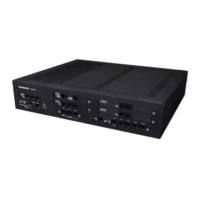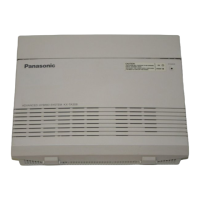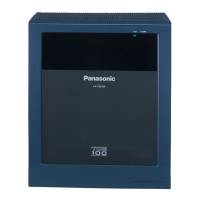When the original destination is: The Available Intercept Destination is:
• ICD Group
The ICD Group Overflow destination assigned to the
group. (® 1.2.2.6 Overflow Feature)
® 5.13 [3-5-1] Incoming Call Distribution Group
—
Group Settings—Overflow No Answer
—
Time out
& Manual Queue Redirection—Destination-Day,
Lunch, Break, Night
®
[625] Destination for Overflow Time Expiration
• VM Group (DTMF/DPT)
The destination assigned to the first extension of the
VM group.
• DISA
*1
If all DISA ports are busy when a call is made using
DISA, one of the following can be selected through
system programming:
• Disable: Busy tone is sent to the caller. When
using
an
analogue trunk, a ringback tone is sent.
• Operator: The call will be redirected to the
operator.
• AA-0, AA-9: The call will be redirected to the
destination assigned to that AA number.
® 7.3 [5-3-1] Voice Message—DISA System—
Option 1—
DISA Intercept—Intercept when all
DISA ports are busy
• PS Ring Group
*2
• External Pager (TAFAS)
*2
• Analogue/ISDN Remote Maintenance
• Other PBX
Extension (TIE with no PBX Code)
Not assignable (Intercept Routing is not available.)
*1
Intercept Routing for DISA will redirect a call only if all of the Direct Inward System Access (DISA) ports are busy. Once the call
reaches the destination extension by using the DISA feature, the Intercept Routing feature of the extension is used.
*2
By
assigning
the forward destination of a Virtual PS to a PS Ring Group or external pager, and assigning Intercept Routing destinations
to the Virtual PS, calls to these destinations will be redirected to the Intercept Routing destination of the Virtual PS.
Feature Guide 29
1.1.1 Incoming Trunk Call Features

